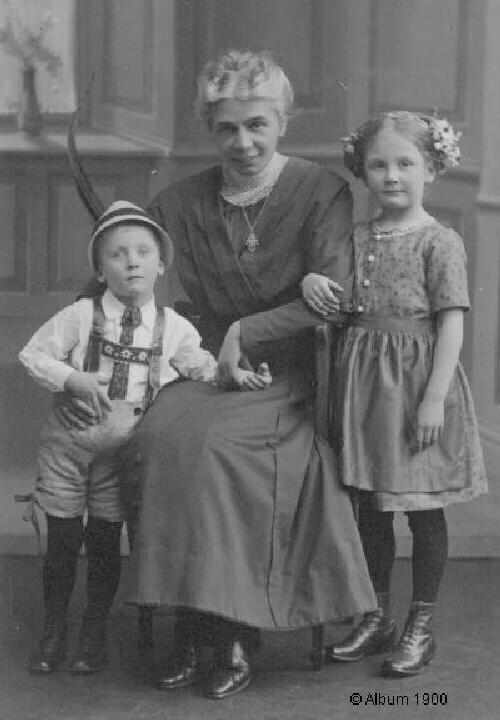
Ethnic Clothes: German Costume Conventions

Figure 1.--These two German children are having their portrait taken with their grandmother. Note the boy has been dressed uo in a folk-like costume, but not the girl. Also note that the boy's folk costume is just made to look like one, the short pants are not leather lederhosen and neither is the halter. Image courtesy of Album1900
|
German children might wear ethnic costumes for festivals and other celebrations. Most villages and towns celebrated a number of festivals related to the seasons such as harvests or bringing the cows down from Alpine pastures or historic events. There were also religious celebrations. Often the children participating in these celebrations wore accurate ethnic costume which had a number of regional varriants. We also note German boys wearing a kinfd of mock-ethnic costume. Here there is no effort at real accuracu, only a generic folk look. In some instances boys might wear these outfits as a kind of dress up garment. This was especially the case of younger boys. It seems to us that this use of an ethich costume for dress up occassions was less common for girls. Girls seem to have most commonly worn folk costumes for festivals, not for dressing up. But this is just our ininitial assessment. Hopefully our German readers will provide their insight here.
HBC

Navigate the Boys' Historical Clothing Web Site:
[Return to the Main German ethnic costume page]
[Return to the Main German page]
[Return to the Main lederhosen page]
[Introduction]
[Activities]
[Biographies]
[Chronology]
[Clothing styles]
[Essays]
[Girls]
[Bibliographies]
[Contributions]
[FAQs]
[German glossary]
[Satellite sites
[Tools]
[Boys' Clothing Home]
Navigate the Boys' Historical Clothing ethnic pages:
[Main ethnic page]
[German]
[Greek]
[Irish]
[Native American]
[Scottish]
Created: 6:40 PM 8/22/2004
Last updated: 6:40 PM 8/22/2004



